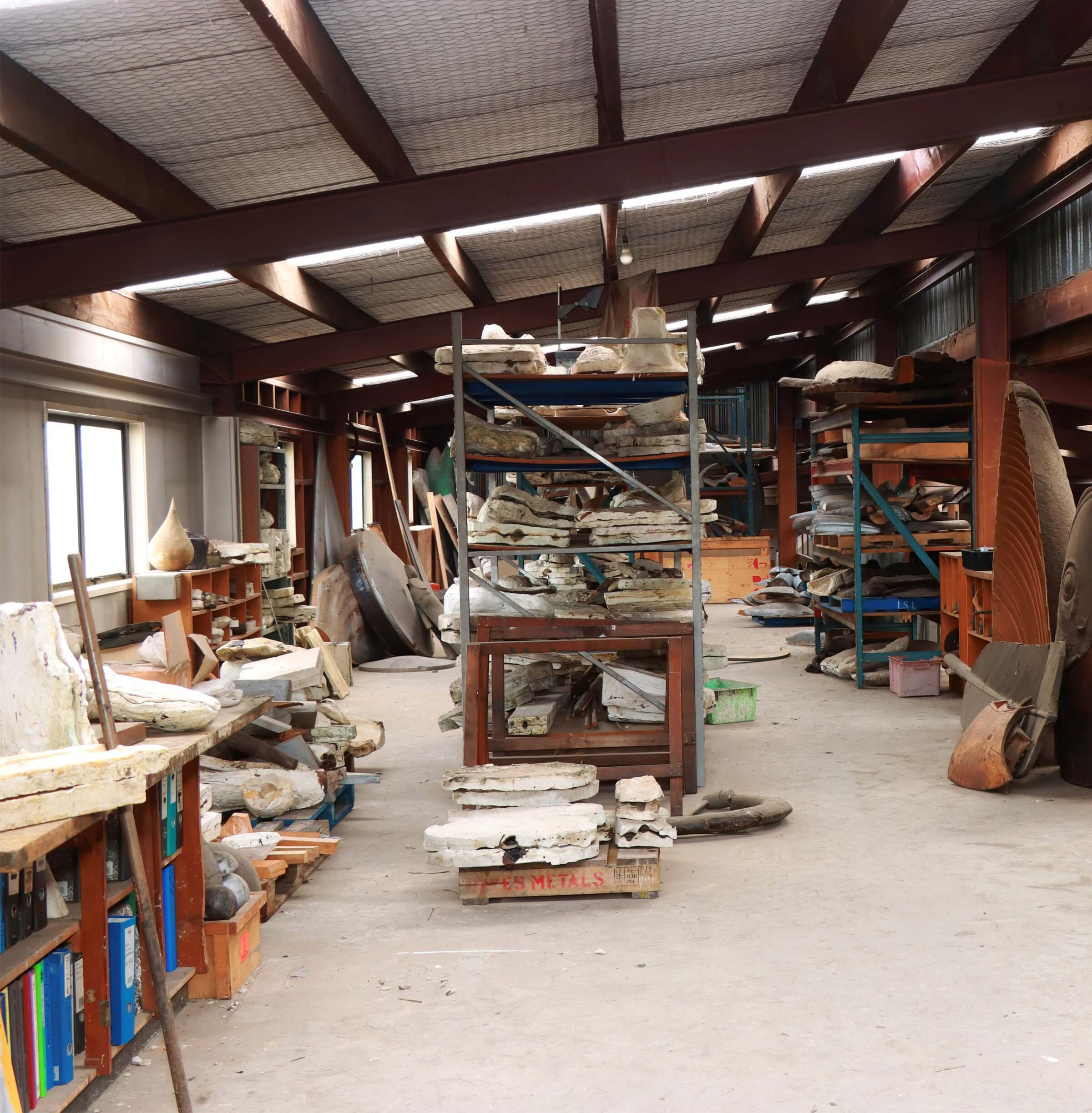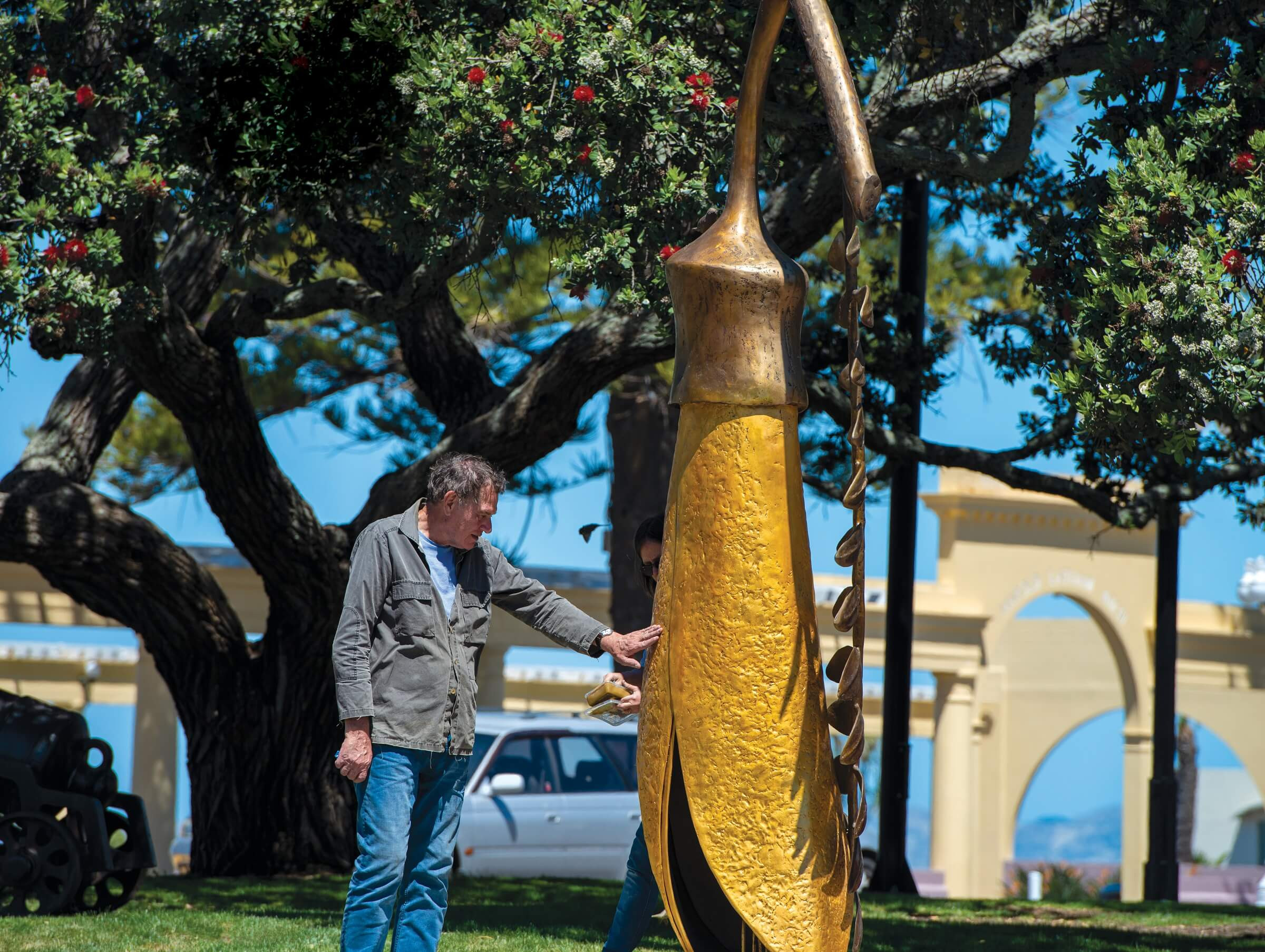2014 The Gold of the Kōwhai
2014 The Gold of the Kōwhai
….the gold of the kōwhai”, which became the basis of numerous Dibble works. The kōwhai’s gold was taken literally, and Dibble studio began to apply gold sheet onto the surface of the bronze to make the bright petals.
Opposite MTG Hawke’s Bay, corner of Tennyson and Herschell Streets, Napier
Commentary
The kōwhai as an icon developed in Dibble’s work in an almost storybook progression: from a very simple and small motif, it became bigger, bolder, and more complex. The seed that germinated this abundance was a line from a poem by William Pember Reeves.
Reeves was a New Zealand statesman who spent most of his life abroad in England. His most famous poem, The Passing of the Forest - A Lament for the Children of Tanē (1898), mourned the clearing of the native bush. This poem came to the attention of the Dibble studio as part of the research undertaken for Southern Stand: The New Zealand Memorial. A phrase from this period stayed with Dibble and into his work beyond, being “the gold of the forest” as a description of the kōwhai tree. It is a very visual expression, summing up the impression of a kōwhai in full bloom with its vibrant colour, particularly in a New Zealand native bush setting where there are few coloured flowers. Kōwhai bloom at the beginning of spring so the burst of yellow after winter is startling; bright gold against a backdrop of monochrome green.
The imagery inspired the evolution of the phrase “the gold of the kōwhai”, which became the basis of numerous Dibble works. The kōwhai’s gold was taken literally, and Dibble studio began to apply gold sheet onto the surface of the bronze to make the bright petals. This interplay of different metals, each complimenting the other, had earlier been seen in Dibble’s use of bronze juxtaposed with Corten steel.
The largest Dibble kōwhai was the one made for Napier, sponsored by four families from the area, and placed directly opposite MTG Hawke’s Bay.

